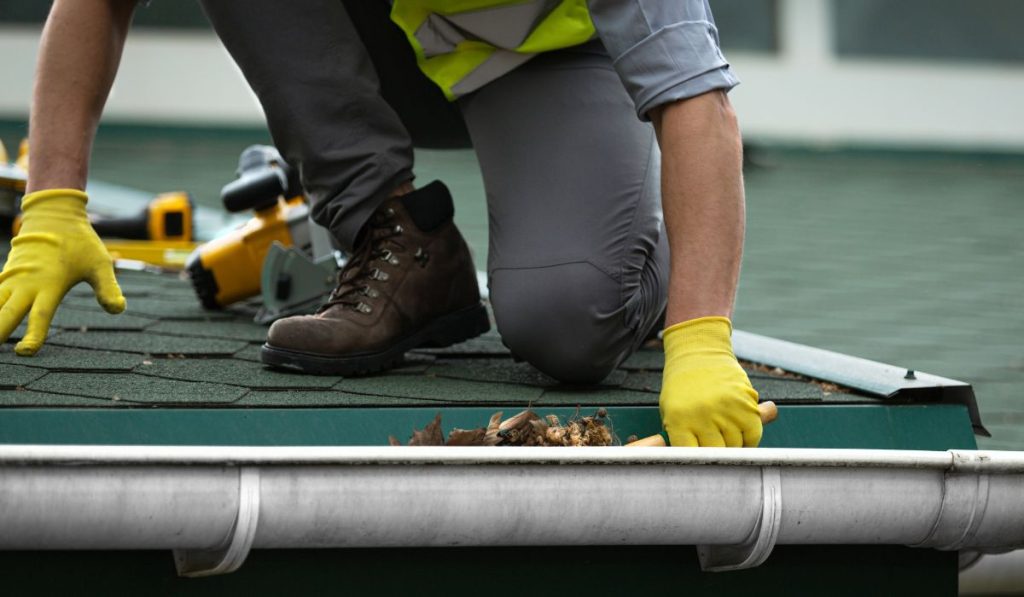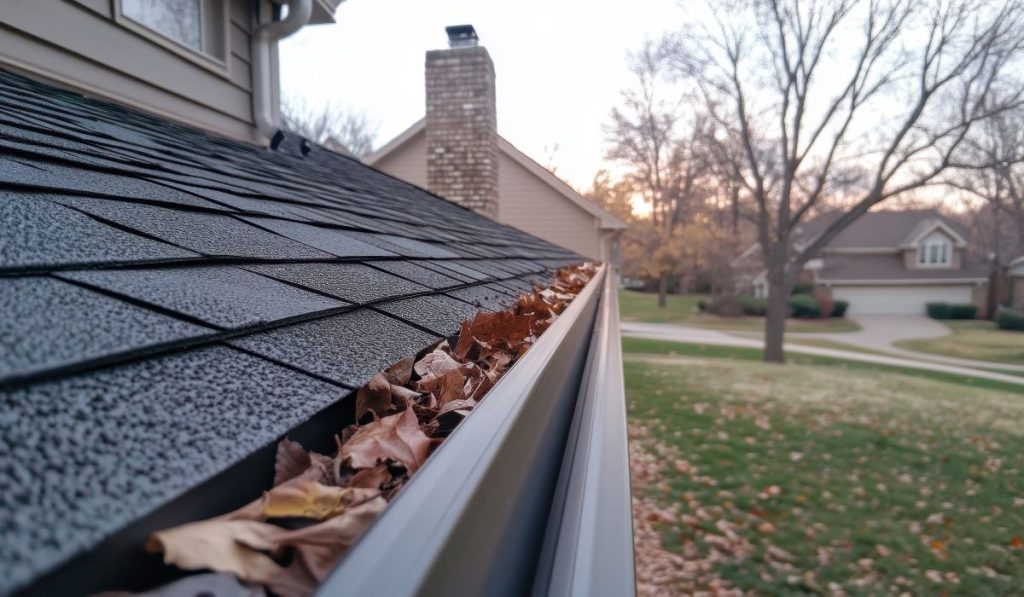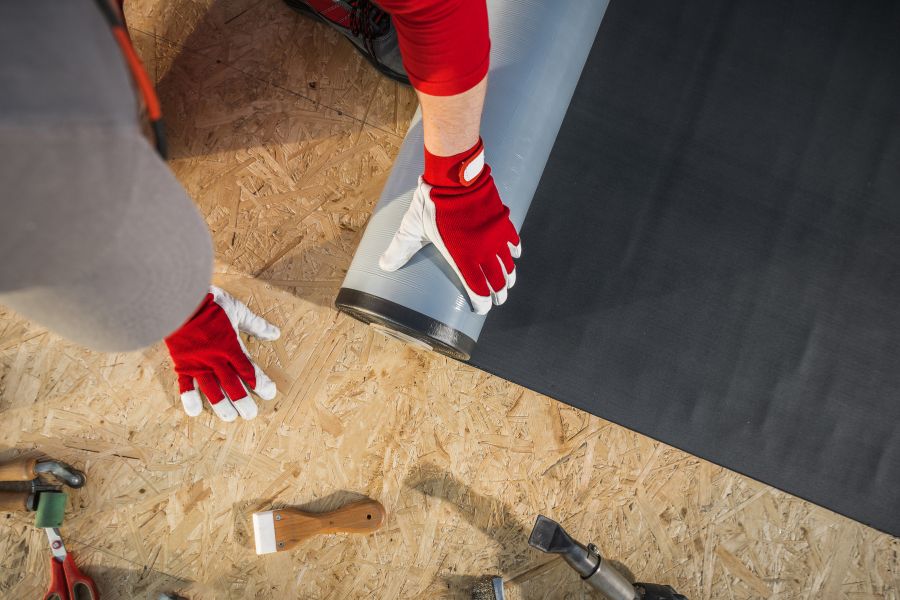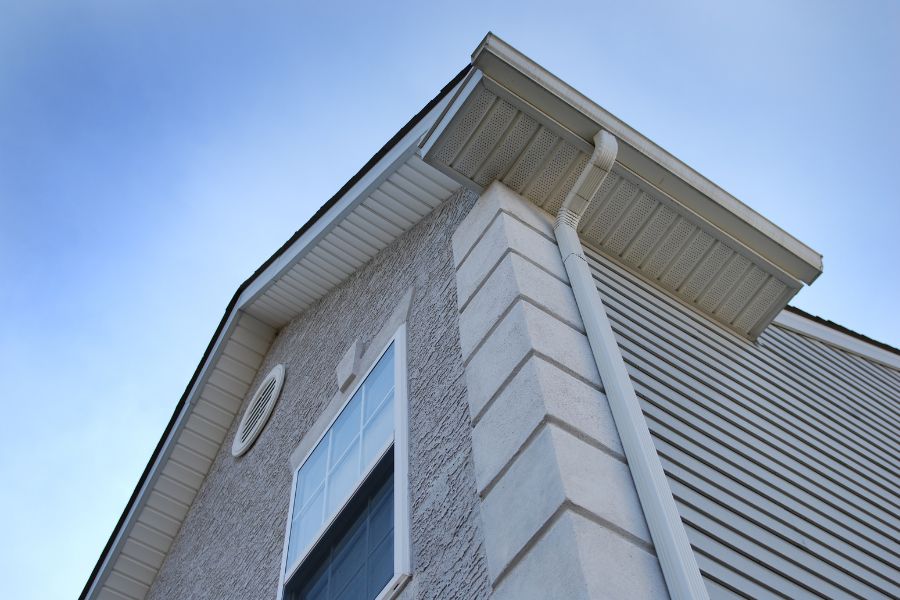Clogged gutters might not sound like a big deal, but they can quietly wreck your home. When water can’t flow out, it backs up, spills over, and sneaks into places it shouldn’t like your ceiling. The result? Leaks, stains, and repair bills that’ll make you wince.
The fix isn’t rocket science. Keeping your gutters clean and checking for blockages before storm season can save you a ton of stress. Let’s break down how a simple gutter issue can turn into a full-blown ceiling leak, and what you can do to stop it before it starts.
How do I stop my ceiling from leaking due to clogged gutters?
Clean your gutters regularly, install guards, and ensure downspouts direct water away from your home to stop leaks before they start.
Key Takeaways
- Clogged gutters can cause serious ceiling leaks if ignored.
- Regular cleaning keeps water flowing and prevents overflow damage.
- Watch for stains, musty smells, or sagging gutters – all early red flags.
- Gutter guards and proper downspout placement help avoid recurring clogs.
- Fix leaks fast to prevent mould, stains, and structural issues
How Gutters Protect Your Home
Think of gutters as your home’s first line of defense against water damage. They collect rainwater from the roof and direct it safely away from your walls, foundation, and landscaping.
Without them, water can pool near the base of your home, sneak into cracks, and cause serious issues like basement leaks or shifting foundations. Gutters also keep rain from soaking your siding or dripping into your ceilings.
Keep them clean, and they’ll quietly do their job, saving you from costly repairs and keeping your home looking sharp through every storm.

What Happens When Gutters Get Clogged
When gutters get clogged, water stops flowing where it should. Instead of draining away, it spills over the edges, soaking your siding and foundation. That trapped water can also back up under the roofline, sneaking into ceilings or walls.
You’ll start noticing stains, peeling paint, or that musty smell nobody wants in their home. The fix? Keep your gutters clean and clear. A quick rinse after heavy storms and a seasonal check-up can save you from costly ceiling repairs later. Think of it as basic maintenance that protects your home’s whole vibe.
Can Clogged Gutters Really Cause Ceiling Leaks?
Yep, they totally can. When your gutters clog, rainwater has nowhere to go. It overflows, seeps under the roofline, and starts creeping into your attic or ceiling.
Over time, that trapped moisture can stain ceilings, warp drywall, and mess with insulation. The fix? Keep those gutters clear. Clean them out at least twice a year, and if you hate heights, grab gutter guards or hire a pro. It’s way cheaper than repairing a water-damaged ceiling.
Warning Signs of Gutter-Related Ceiling Leaks
Your ceiling doesn’t just start leaking out of nowhere. The clues show up early if you’re paying attention. Water stains or brown rings on the ceiling usually mean moisture’s been creeping in for a while.
Peeling paint or bubbling plaster near the top corners of your walls? That’s another red flag. You might even catch a faint musty smell a sign water’s pooling where it shouldn’t.
If your gutters are overflowing or sagging, don’t ignore it. That’s water with nowhere to go, and gravity’s next stop is inside your ceiling. Catch these early, clean those gutters, and you’ll save yourself a major repair bill later.
Other Causes of Ceiling Leaks (and How to Tell the Difference)
Not every ceiling leak comes from clogged gutters. Sometimes the real culprits are leaking pipes, roof damage, or bad attic ventilation. If the water shows up after a shower or heavy AC use, plumbing’s your suspect.
Roof leaks, on the other hand, usually follow rain and leave brownish stains that spread slowly. Attic condensation can also mimic a leak, especially in cold weather.
To figure it out, check timing, location, and water color. Clear or warm water often means plumbing, while dirty or cold water points to a roof issue. Fixing the right source first saves you from patching the same ceiling twice.
How to Prevent Ceiling Leaks from Clogged Gutters
Clean Your Gutters Regularly: This one’s simple but powerful. Scoop out leaves and gunk at least twice a year, especially before heavy rain seasons. If you hate the mess, hire a pro to handle it – worth every penny.
Install Gutter Guards: Think of these as your gutter’s personal bodyguards. They block debris from piling up while still letting rainwater flow through. Less clogging means fewer leak risks for your ceiling.
Check for Sagging or Damage: If your gutters are sagging, cracked, or pulling away from the roof, water’s going to find a way inside. Tighten brackets, reseal joints, and replace any damaged sections before the next storm hits.
Direct Downspouts Away from the House: Make sure downspouts push water at least a few feet from your foundation. Pooling water near walls or roofs can sneak into your ceiling faster than you’d think.
Stay Consistent: Prevention’s not a one-time flex. Schedule seasonal checks, keep your system clear, and your ceiling won’t ever have to deal with soggy surprises.
What to Do If You Already Have a Ceiling Leak
First things first, don’t panic. Move any furniture or electronics out of the way and grab a bucket to catch the dripping water. That’s your short-term save.
Next, find the source. Check your attic or ceiling for wet insulation or water trails that lead back to the leak. It could be a clogged gutter or a damaged roof section letting water sneak in.
Once you’ve contained the mess, call a roofing or gutter pro to inspect the damage. The faster you act, the less likely you’ll deal with stains, mould, or structural issues. Think of it as damage control done right, not delayed.
FAQs
1. Can clogged gutters really cause ceiling leaks?
Yes. When water can’t drain, it overflows and seeps into your roofline, eventually soaking through ceilings and walls.
2. How can I tell if a leak is from clogged gutters?
Check for water stains near your ceiling edges or dripping during rain. If gutters are overflowing, that’s your clue.
3. Will cleaning my gutters stop the leak?
If caught early, yes. Clearing out debris lets water flow freely again and prevents more damage.
4. How often should I clean my gutters?
Twice a year, minimum. More if you’ve got trees nearby dropping leaves like it’s fall every day.
5. What’s the best fix for recurring clogs?
Gutter guards. They keep out debris so you spend less time on ladders and more time dry inside.
Conclusion
Clogged gutters might seem harmless, but they’re sneaky troublemakers. When water overflows, it seeps into your roofline and ceiling, leading to leaks, stains, and even mold.
The fix? Keep your gutters clear. A simple clean-up twice a year saves you from pricey ceiling repairs later. If you’re already spotting water spots or sagging drywall, it’s time to act fast and call a pro. Clean gutters aren’t just maintenance – they’re protection for your home and peace of mind.





